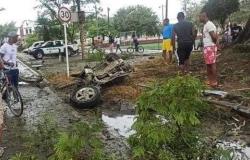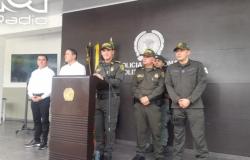
He culture Ministry headlined on Wednesday, May 22 in Cartagena the launch of scientific research on the San José Galleon. During the event, details were released about the studies planned for the archaeological wreck sunk in the depths of the sea, which will help clear up the unknowns about this iconic ship.
The mission is coordinated by several national entities, including the Ministry of Cultures, Arts and Knowledge, the Colombian Institute of Anthropology and History (ICANH), the National Navy and the General Maritime Directorate (Dimar).
This will be the first submerged archaeological zone declared for protection in Colombia, as announced by the Ministry of Cultures.
“This recognition is historic in creating this protected area that is being carried out for the first time in the country. The expedition of the San José Galleon is not an extraction mission and that is clear, it is leaving Colombia a scientific and cultural mission. said the Minister of Cultures Juan David Correa about this launch to PUBLIMETRO.
For its part, ICANH declared the first underwater archaeological zone in Colombia at the shipwreck site of the San José Galleon sunk more than 300 years ago off the Colombian coast in deep waters beyond the Rosario Islands. In the shipwreck, according to chroniclers of the time, more than 700 crew members died along with a fabulous treasure of gold and silver.
“It will not be an intrusive intervention but one of characterization. Underwater archeology is very recent in Colombia and we do not have a great history. We started recently and with awareness of what it implies that it is a new and demanding field. and that we necessarily have to start working in an articulated manner in different fields of knowledge to be able to have the results,” Alhena Caicedo Fernández, the director of ICANH, told PUBLIMETRO.
The authorities clarified that the initial phase of the project will be exploratory nature, meaning that no intrusive actions will be taken to remove the wreck. This stage will focus on the data collection and evaluation of the galleon’s condition, ensuring that any future intervention is carried out with the utmost respect for the archaeological heritage.
“We have to guarantee that there is research in archeology because it is the only one in which we can have answers to the past and that go far beyond memory and our ancestors. Archeology allows us that avenue and guarantees that we have a strengthened field of archaeological research and we can know and make relevant and Colombia really needs that. We are realizing that we have a lot of archaeological potential and still very little development in research and at ICANH we are working on it,” explained the director of ICANH.
Galeón San José: ICANH declares Colombia’s first underwater archaeological zone at the shipwreck site
Regarding the voices critical of the project, Caicedo Fernández indicated that they have been taken into account in the evaluations carried out on the project. Archaeological Management Plan.
“The Archaeological Management Plan that we began to develop quite some time ago since ICANH in conjunction with DIMAR is a process that has had many people involved and has been worked openly because an Archaeological Management Plan is not a research project but is a roadmap for the protection of the archaeological area of what can be done. and it can’t be done. This first plan had a first phase of public presentation that took place in December to receive comments from the citizens and then it became a second phase of receiving comments from the citizens where the voices of some archaeologists who were against the plan were collected. archaeological management but also of the international experts in the exercise that was carried out here in February of this year that helped us a lot to nourish that plan.”
Regarding the Archaeological Management Plan, the director of ICANH indicated that the Galleon will have protection as a result of the declaration of this archaeological zone.
“At this moment I believe that we have a wonderful archaeological management plan, very well done, very robust with everything that is required to guarantee that the San José Galleon does have the protection that is required. There will continue to be critical voices and they have a particularity, none of them have the experience as underwater archaeologists nor the trajectory or research perspectives that they had being so critical and they are not the most experts. We are guaranteeing that the entire team that has been working especially in archeology does have a specialty and an important history of work endorsed by this group of international experts and that they are permanently helping us to ensure that the work is carried out correctly.”
In the first phase of the research project San José Galleon, the authorities have defined several actions to characterize the area. Initially, it They will use remote sensors to perform non-intrusive diagnosis and generate images of the site. These images will allow us to build an inventory of the archaeological evidence on the seabed, classifying the materials and their origin. This record will serve to establish a starting point on the level of deterioration of the identified elements.
In parallel, an underwater research vessel will be equipped with dynamic and acoustic positioning technologies. Additionally, a Remotely operated vehicle with sensors and tools capable of descending to great depths. With this system, digital documentation of the archaeological context will be carried out through georeferenced film, photographic and photogrammetric records.
You can also read: They reveal what the scientific investigation will be like on the discovery of the San José galleon
On the other hand, indigenous Bolivians from the Qhara Qhara nation have announced their presence along with five experts at the launch of the research project. The community maintains that part of the sunken treasure comes from minerals extracted from Cerro Rico de Potosí, in Bolivia, one of the main sources of income for Spain during the colonial era.
For this reason, they insist that a part of the wreck be taken as a sample to the nation. Qhara Qharawhile the rest is exhibited in a museum for conservation.





